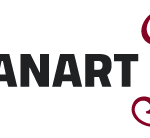WordPress is one of the most widely used platforms for building websites and blogs worldwide. Since its launch in 2003, WordPress has grown tremendously and now powers over 40% of all websites on the internet.
In this article, we’ll explore what WordPress is, how it works, its features, pros and cons, and why it remains the top choice for individuals, businesses, and developers.
1. What is WordPress?
WordPress is an open-source content management system (CMS) written in PHP and paired with a MySQL or MariaDB database. It allows users to create, manage, and publish digital content on the web easily, without needing to write complex code.
Originally created as a blogging platform by Matt Mullenweg and Mike Little, WordPress has evolved into a full-featured CMS capable of powering complex websites, including online stores, portfolios, news portals, membership sites, and more.
2. Types of WordPress
There are two main versions of WordPress:
WordPress.org (Self-hosted WordPress)
- You download WordPress software from WordPress.org.
- You install it on your own web hosting server.
- You have full control over customization, plugins, themes, and code.
- Requires you to manage your hosting, backups, and security.
- This version is free to use (open source), but you pay for hosting, domain, and premium themes/plugins if needed.
WordPress.com (Hosted WordPress)
- A commercial platform powered by Automattic (the company behind WordPress).
- Hosting and maintenance are managed for you.
- Easier to start but limited in terms of customization and plugins in free or lower-tier plans.
- Paid plans unlock more features, themes, and the ability to install plugins.
- Good for beginners or users who want minimal management.
3. Key Features of WordPress
- User-Friendly Interface: Intuitive dashboard for creating pages, posts, and managing your website.
- Themes: Thousands of free and premium themes to change the website’s design instantly.
- Plugins: Extend functionality easily by installing plugins (contact forms, SEO tools, eCommerce, etc.).
- SEO Friendly: Built with search engine optimization in mind and supported by many SEO plugins.
- Media Management: Upload and manage images, videos, audio, and other files.
- Responsive Design: Most themes are mobile-friendly out of the box.
- Multilingual Support: Can create websites in multiple languages.
- User Roles and Permissions: Manage contributors, editors, admins with different access levels.
- Community and Support: Huge community, forums, tutorials, and developer ecosystem.
4. How Does WordPress Work?
WordPress combines PHP scripts and a database to dynamically generate web pages.
- When a visitor requests a page, WordPress uses PHP to pull content from the MySQL database.
- It combines the content with the active theme’s template files.
- It then sends the resulting HTML to the visitor’s browser.
This dynamic system means you can update content without changing the site’s code.
5. What Can You Build with WordPress?
WordPress is extremely versatile and can be used to build:
- Blogs and Personal Websites
- Business Websites and Portfolios
- Ecommerce Stores (using WooCommerce plugin)
- Membership Websites
- Forums and Community Sites
- Online Courses and Learning Platforms
- News and Magazine Websites
- Event Booking Sites
- Multilingual Websites
The only limit is your creativity and technical skills.
6. Pros and Cons of WordPress
Pros
- Free and Open Source
- Highly Customizable
- Large Ecosystem (Themes & Plugins)
- Strong SEO Capabilities
- Easy to Use for Beginners
- Scalable for Large Websites
- Strong Community Support
Cons
- Can Be Vulnerable to Security Issues if not updated properly.
- Performance May Slow Down with many plugins or poor hosting.
- Learning Curve for Advanced Customization
- Need to Manage Hosting and Backups (if self-hosted)
- Frequent Updates Required
7. Who Uses WordPress?
WordPress is used by:
- Individuals for personal blogs.
- Small businesses for their websites.
- Large enterprises like BBC America, The Walt Disney Company, Microsoft News, and more.
- Ecommerce businesses using WooCommerce.
- Nonprofits and educational institutions.
8. Getting Started with WordPress
If you want to create a website with WordPress:
- Choose Your WordPress Version: Hosted (wordpress.com) or self-hosted (wordpress.org).
- Get a Domain Name and Hosting: If self-hosted, buy a domain and web hosting.
- Install WordPress: Many hosts offer one-click installation.
- Select and Customize a Theme: Free or premium.
- Add Plugins: For SEO, security, forms, ecommerce, etc.
- Create Pages and Content: Start publishing posts, pages, media.
- Manage and Maintain: Keep WordPress, themes, and plugins updated for security.
9. Conclusion
Whether you want a simple blog or a complex eCommerce store, WordPress offers the tools and community to make it happen. With continuous development and a passionate community, WordPress will likely remain a dominant CMS for years to come.
